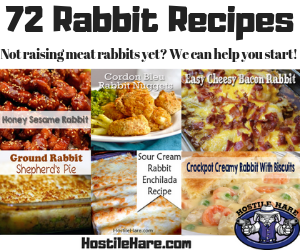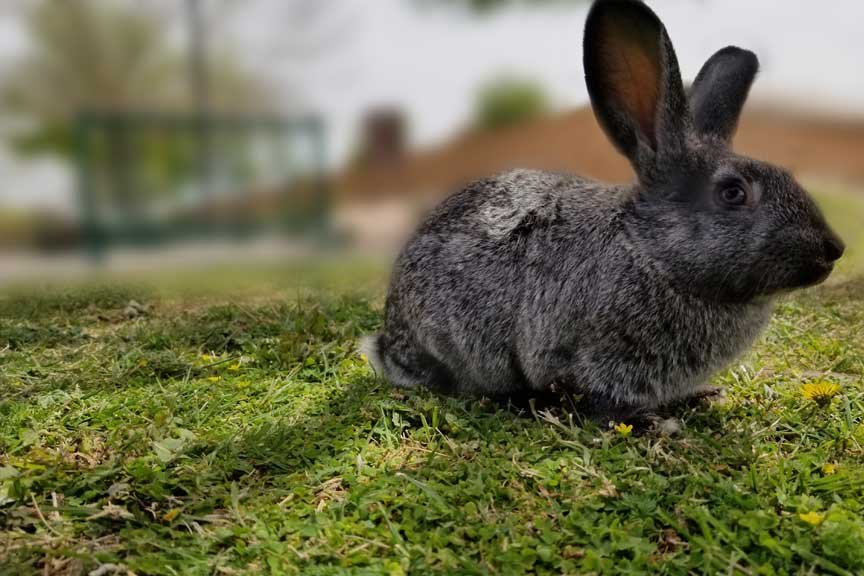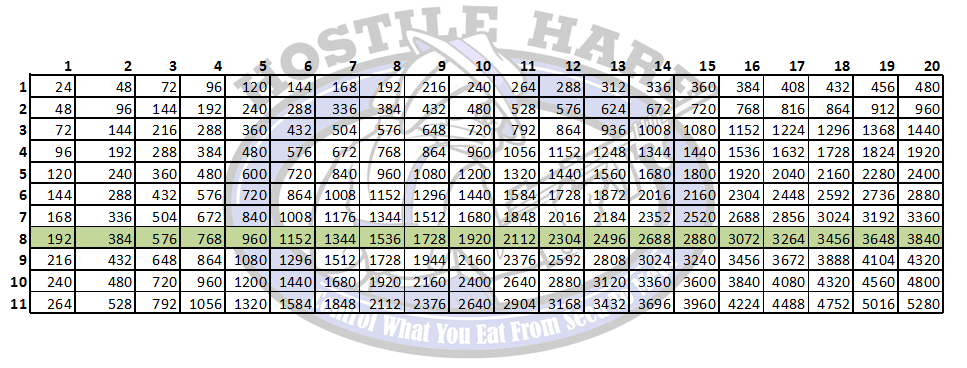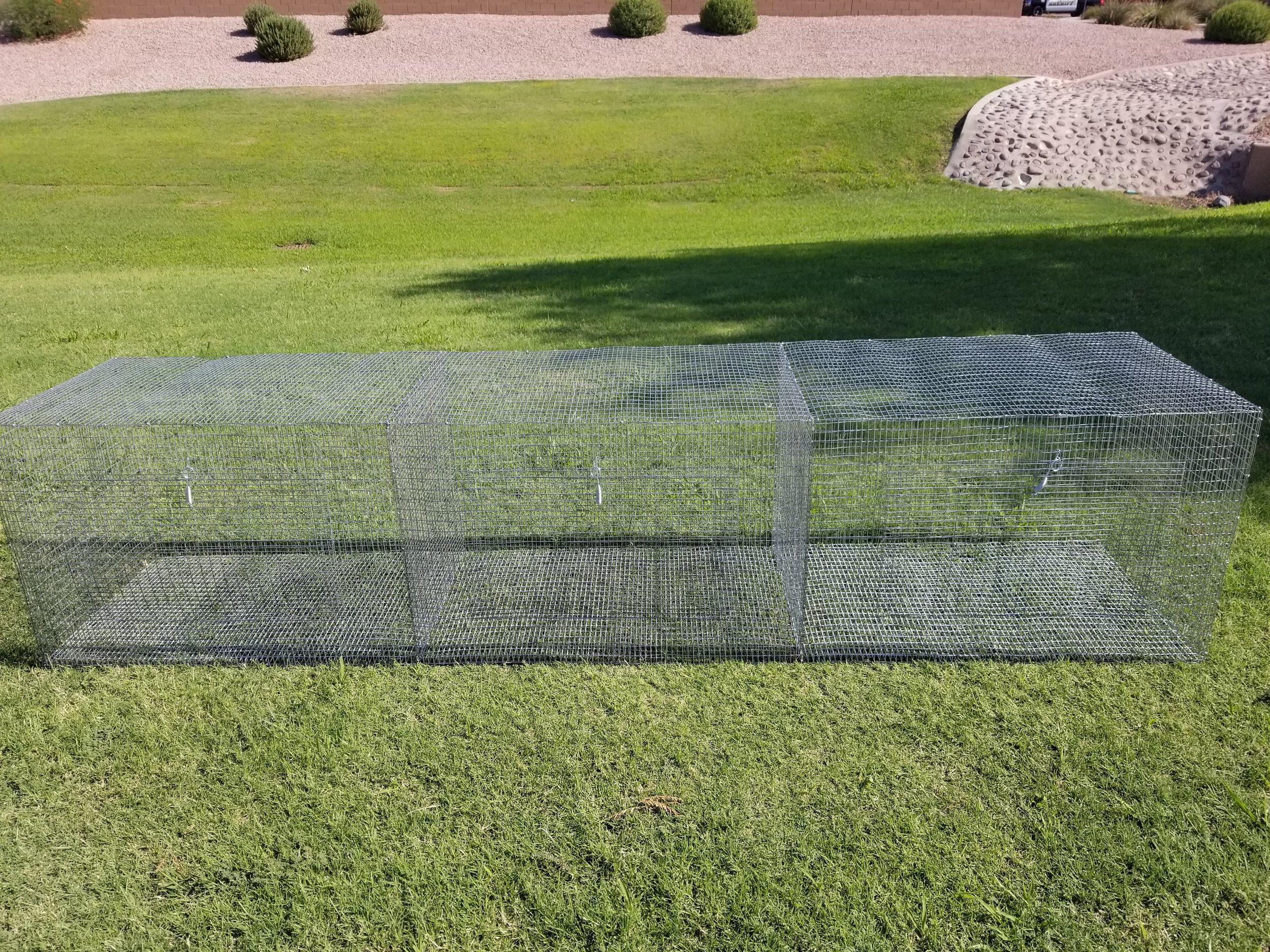Rabbit Meat Multiplier By Hostile Hare
My name is Nick Klein and I'm a carnivore... There are not many things that I enjoy more than a big juicy steak, rotisserie chicken, or any number of meaty treats. But it seems lately the reports of E coli and salmonella outbreaks, animal cruelty at feedlots, and inhumane methods of dispatching animals are increasing in frequency. There are also threats of a scarcity of feed, a growing world population that needs to be fed, and pending laws that would limit the freedom of animal raisers. So what can a responsible meat eater do? The answer: raise their own livestock! And the livestock of choice for us urban folks is rabbit There are many places on HostileHare.com where you can find advice on raising rabbits. In this article, we're going to focus on how many rabbits you'll need to raise to replace your meat supply and how to use the Hostile Hare Rabbit Meat Multiplier.
Family Meat Consumption
First, let's figure out how much meat we and those in our care consume. We can either watch our diet for a month and track our meat consumption or try using the national average for a gauge. The average American consumes 270.7 pounds of meat a year, or about 3/4 of a pound per day. Most of that meat isn't as high in protein as rabbit, and 271 pounds annually is a bit excessive (said while consuming my second pound of rabbit today... I'm contributing to the increase of the average!). With that in mind, we may not need the full 271 pounds per person. For example, rabbit is 21% protein and if you need 75 grams of protein a day to survive, you would only need about 215 pounds of rabbit... if you eat no other meat but rabbit.
Alternative Meat Sources
Second, we should consider whether or not we want to raise other meat sources such as quail, fish, goats, ext. You may not need as much rabbit meat if you have other livestock. Or you can focus on rabbit and trade it for other meat sources that you're unable to raise yourself.
Barter and Sales Goals
Third, speaking of trading rabbit for other goods, we need to consider what sort of barter and sales power we want to achieve. Do we want to retail rabbits and rabbit meat? Would our local economy support an increase in meat supply? Could we sell enough extra to run the rabbitry at a profit? All of these questions require investigation in your area. This merits investigation, because food production is a great way to maintain the value of investment even during inflation, and devaluation of currency... A real threat that we could be facing in the upcoming years...
Environmental and Ethical Considerations
Fourth, we need to determine how often we plan on breeding our rabbits and whether or not we can provide them with a full enclosure with temperature control... You see, once the temperature goes above 85 degrees does will no longer “lift” for a buck, and vitality of the bucks' semen is threatened at 85 degrees, and risks being sterile until the temperature drops long enough to produce more. If we can only afford a 3 wall shed and some fans, we won't be able to breed during the hot months of the year. Also, we need to bring compassion into the formula... This is going to vary person to person. Is it ethical to breed the rabbit every 32 days? Are we okay with wearing out our livestock quickly to increase our output? You will notice a green strip at 8 kindles per year in the Rabbit Meat Multiplier. To me, that is the magic number. It’s the point where the rabbit is running at maximum efficiency with minimal stress. Some of you will consider that over breeding, and that’s fine, I understand your concern… but let me tell you, there have been rabbits that I’ve had that were noticeably unhappy when less frequent breeding was attempted. It’s in their evolution or creation that makes their instincts drive them to reproduce frequently.
Quantity
Fifth, we should have a good number in mind now of how much rabbit meat we want to produce. So let’s look at the Rabbit Meat Multiplier graph and find the number closest to our goal that uses the planned number of breeding cycles per year, and find how many does we will need to attain our goal.
Rabbit Meat Multiplier
This rabbit meat multiplier is meant to give an idea of what rabbits are capable of producing. It's not a guarantee, it is merely an average. The numbers across the top represent the number of times a year a rabbit can be bred, notice that it does not exceed 11... That is the absolute most amount of times a year you can breed a rabbit assuming that she carries her kits full term, 31 days, and is bred nearly immediately after kindling. It is assumed the average number of surviving kits in a Kindle is 8. It does not take into consideration mortality of the doe or the kits in non-ideal conditions such as extreme heat or cold. It also does not factor in the many variables that exist and raising livestock such as feed inconsistency, natural disasters, animal attacks and invasions, and of course good old-fashioned human error...
In conclusion, once you know how many does you need, it's time to buy some cages. I recommend 1.5 cages per doe, that gives you ample cage space for their offspring and their baby daddies(bucks)... you can find those cages here
Be sure to check us out on Facebook, Instagram, Twitter, Tumblr





